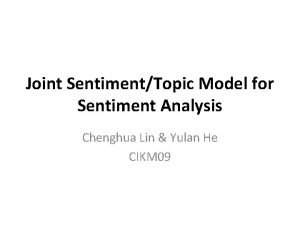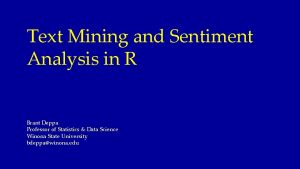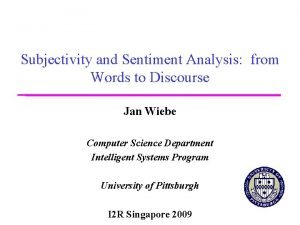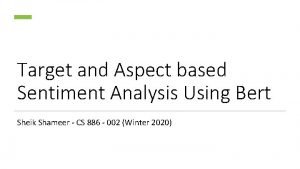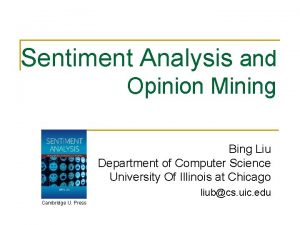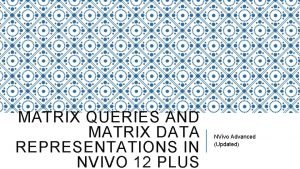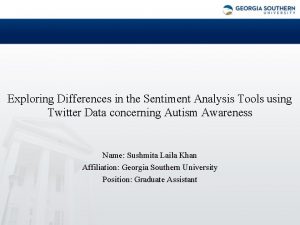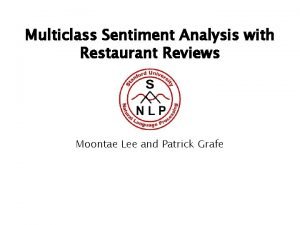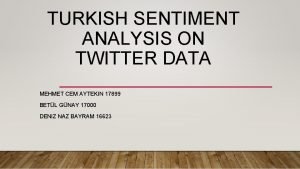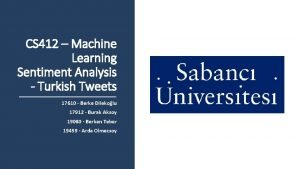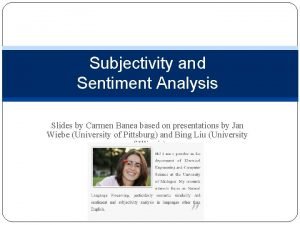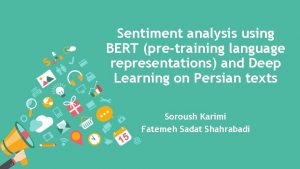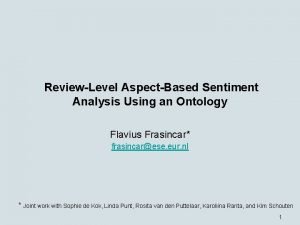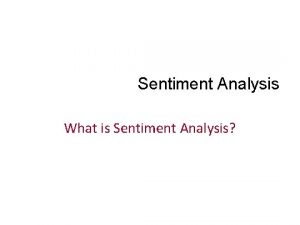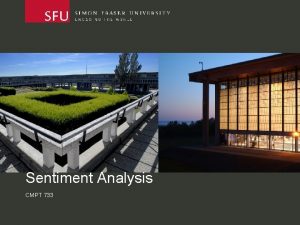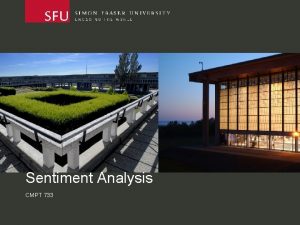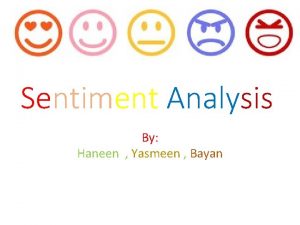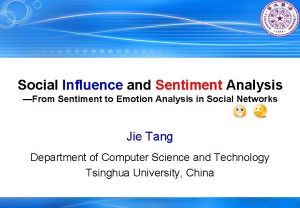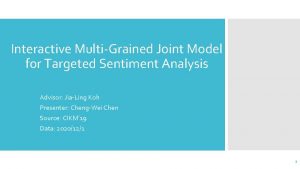Joint SentimentTopic Model for Sentiment Analysis Chenghua Lin















- Slides: 15

Joint Sentiment/Topic Model for Sentiment Analysis Chenghua Lin & Yulan He CIKM 09

Main Idea This paper proposes a novel probabilistic modeling framework based on Latent Dirichlet Allocation (LDA), called joint sentiment/topic model (JST), which detects sentiment and topic simultaneously from text.

Related Works • Sentiment classification based on Machine Learning (e. g. supervised) requires a large amount of human annotation • Sentiment classification model trained in one domain cannot work well in another domain • topic/feature detection and sentiment classification are often performed separately, which ignores their mutual dependence. – e. g. ‘unpredictable steering’: • Negative in automobile review • Positive in movie review

JST model • 1. Fully unsupervised. No need for human annotation • 2. Detect sentiment/topic simultaneously by considering their mutual relation

LDA vs. JST LDA JST • Two Matrices: • Three Matrices: – D × T distribution: θ – T × W distribution: φ – D × S distribution: π – D × S × T distribution: θ – D × S × W distribution: φ

LDA vs. JST (cont. ) LDA JST

Process of JST

Incorporating Model Priors • One of the directions for improving the sentiment detection accuracy is to incorporate prior information or subjectivity lexicon (i. e. , words bearing positive or negative polarity), which can be obtained in many different ways. – Paradigm word list – Mutual information – Full subjectivity lexicon – Filtered subjectivity lexicon

Experiment • Sentiment Classification: Only consider two sentiment labels, i. e. positive or negative • Topic Extraction

Sentiment Classification

Sentiment Classification (cont. )

Summary 1 • 1. Classification performance of JST is very close to the best performance of ML but save a lot of annotation work. • 2. topic information indeed helps in sentiment classification as the JST model with the mixture of topics consistently outperforms a simple LDA model ignoring the mixture of topics.

Topic Extraction

Summary 2: • Manually examining the data reveals that the terms that seem not conveying sentiments under these two topics in fact appear in the context expressing positive sentiments. The above analysis illustrates the effectiveness of JST in extracting mixture of topics from a corpus.

Conclusion • 1. presented a joint sentiment/topic (JST) model which can detect document level sentiment and extract mixture of topics from text simultaneously. • 2. fully unsupervised, thus provides more flexibilities and can be easier adapted to other domain. • 3. yield competitive performance in document level sentiment classification compared other existing supervised approaches • 4. discovered topics that corresponds to positive/negative sentiment
 Chenghua lin
Chenghua lin Twitter sentiment analysis using spark streaming scala
Twitter sentiment analysis using spark streaming scala Text mining and sentiment analysis in r
Text mining and sentiment analysis in r Subjectivity in sentiment analysis
Subjectivity in sentiment analysis Bert aspect based sentiment analysis
Bert aspect based sentiment analysis Bing images
Bing images What is nvivo used for
What is nvivo used for Sentiment analysis tools comparison
Sentiment analysis tools comparison Multiclass sentiment analysis
Multiclass sentiment analysis Sentiment analysis for hotel reviews
Sentiment analysis for hotel reviews Turkish sentiment analysis
Turkish sentiment analysis Turkish sentiment analysis
Turkish sentiment analysis Azure twitter sentiment analysis
Azure twitter sentiment analysis What is subjectivity in sentiment analysis
What is subjectivity in sentiment analysis Unsupervised sentiment analysis using bert
Unsupervised sentiment analysis using bert Sentiment analysis conclusion
Sentiment analysis conclusion
